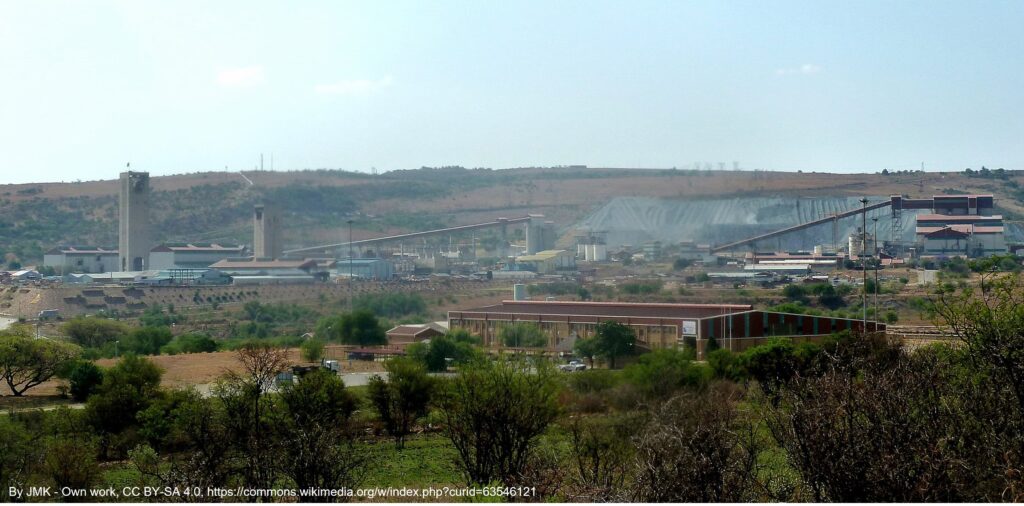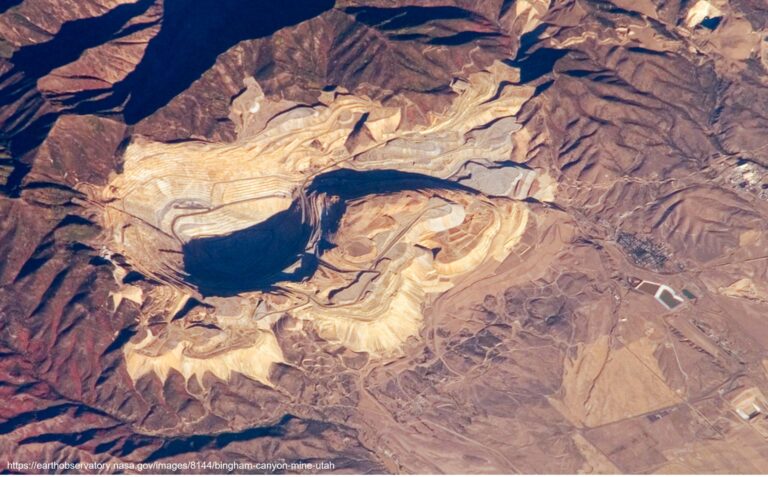Useful resource depletion is among the largest challenges going through the mining trade. The problems of declining grades and frequency of discoveries are well-known, however depletion can also be driving miners ever deeper in quest of ore. There may be extra to ultradeep mining is extra than simply digging a deeper gap; whereas the logistical difficulties of excavating 1000’s of meters of overburden are apparent, there are a lot of different, extra insidious challenges.
Introduction
‘Deep’ mining is a relative time period, however typically something above 500 m might be thought-about shallow. Underground mines routinely attain 1000 m; something beneath this may very well be thought-about ‘deep’. Depths of ~2000 m have been not often reached even a number of a long time in the past, however they’re now changing into more and more frequent. Challenges begin to develop exponentially as you push deeper than about 2000 m; venturing beneath this may be thought-about ‘ultradeep’ mining. Only a few deposits justify the prices and dangers of going so deep; lower than 10 mines on the planet attain 3000 m, and just one approaches 4000 m.
Just a few benchmarks:
- 1210 m: the world’s deepest open pit, Bingham Canyon, Utah.
- 2212 m: the world’s deepest cave, Veryovika, Georgia.
- 3014 m: the deepest mine beneath sea stage, Kidd Creek Mine, Canada. Though different mines could prolong deeper beneath the floor, Kidd Creek begins at a decrease elevation, and consequently reaches 2735 m beneath sea stage, the furthest beneath sea stage you will get with out a submarine.
- 3891 m: the deepest underground mine, Mponeng Mine, South Africa.
- 12262 m: the deepest gap ever drilled, Kola Peninsula, Russia. The 9-inch diameter Kola Superdeep Borehole was drilled between 1970-1995 as a part of a scientific competitors with the US, which was mainly the inverse house race. It was deserted because of lack of funds following a collection of breakdowns.
Prospecting for Deep Deposits
Discovering deeply buried deposits is changing into an more and more acute drawback for the mining trade. Within the outdated days, most deposits have been discovered by surface prospecting and mapping, nevertheless a lot of the ones with apparent floor expressions have been discovered and that is changing into a rarer and rarer means of discovering deposits. In the direction of the center of the 1900’s geophysics, particularly airborne gravity and magnetic surveys, grew to become the principle exploration instruments, resulting in many nice discoveries.
The alerts utilized by these and plenty of different geophysical strategies, nevertheless, decreases exponentially with depth, and the decision of the ensuing information drops. To make issues worse, most geophysical strategies have poor depth decision to begin with: a big deep characteristic might be very exhausting to inform aside from a small, shallow one. Detecting deeply buried deposits is a troublesome and imprecise endeavor.
Drilling additionally turns into exponentially tougher as depths improve. The logistics of inserting and retrieving drilling gear and geologic samples consumes ever extra time, whereas rising friction between the drill and sides of the opening generates torque which always threatens to drag the opening off-target. Drilling vertical holes helps cut back this, but additionally restricts choices in putting drills and following best drilling practices similar to drilling perpendicular to stratigraphy.
Mining Deep Deposits
Choices in mining strategies dwindle as depth will increase; open pits rapidly develop into impractical with rising depth. The deepest pit, Bingham Canyon, is over 1200 m deep, however that is an outlier, worldwide solely a handful of pits prolong deeper than 500 m. Underground mines require much less excavation, however capital prices of building are substantial, after which there’s the sustaining prices of transporting folks, gear, ore, and even air via ever longer tunnel methods always chipping away at revenue margins.
One other main problem to ultradeep mining is the geothermal gradient. As you method the molten core, each the temperature and strain rise at about 25° C and 35 million pascals per kilometer. Rising temperatures threaten each miners and equipment with harmful overheating, whereas rising strain threatens to break down workings. Go deep sufficient and the rocks themselves develop into much less stable, very slowly deforming and flowing over time much like dense clay collapsing below its personal weight. Extra brittle rocks could spontaneously shatter below the compression of overlying rocks, resulting in lethal rock bursts and even full collapse. These dangers additional limit which strategies can be utilized as massive caverns develop into susceptible to collapse, and even small tunnels pose engineering challenges. Whereas mining above 1000 m can usually be completed with little greater than rock bolts and screening, extra refined and dear strategies of reinforcement similar to lining tunnels with concrete is required to help deep mines. Even nonetheless, underground mining risks can solely be managed, not eradicated. Ultradeep mines usually make use of as a lot automation as attainable to cut back dangers to personnel.
Bingham Canyon: The Deepest Open Pit within the World

Bingham Canyon, Utah, is the world’s deepest open pit mine, in addition to being the biggest excavation ever created by human fingers. It’s 1210 m deep, ~4000 m large, and covers and space of seven.7 km2, making it massive sufficient to be seen from house. The mine, which is owned by Rio Tinto, produced 148 kt of copper, 3.3 kt molybdenum 114 koz gold, and 1.95 Moz silver in 2022. Production of tellurium, and very uncommon factor used for photo voltaic panels, started that very same 12 months. Copper manufacturing started in 1906, and present confirmed and possible ore reserves stand at 552 Mt at 0.44% Cu, sufficient to maintain manufacturing via 2032. Bingham Canyon is taken into account the most efficient mine in historical past.
Whereas the pit continues to be increasing horizontally, it’s unlikely to develop into a lot deeper. The steep-sided mine has been hit by a number of landslides, together with two huge slides in 2013 which precipitated 10’s of thousands and thousands of {dollars} in damages. Like many extraordinarily deep open pits, the mine is transitioning to underground operations to chase the ore deeper.
Mponeng: The Deepest Underground Mine within the World
The deepest mine on Earth is South Africa’s Mponeng gold mine, which extends a staggering 3891 m beneath floor. It’s positioned within the legendary Witwatersrand goldfields, as, in truth, are virtually all a lot of the world’s >3000 m deep mines. Mponeng, owned by Concord Gold Mining, has a reserve of 1.9 Moz at 7.25 g/t, with an additional 24.3 Moz of assets. Remaining mine life is 7 years, at which level the mine will prolong to ~4200 m. The challenges and prices of such mining are formidable.
The shaft is so deep that totally different lifts have for use to descend in phases. Descending to the underside takes over an hour. With out cooling temperatures would attain a lethal 65° C; a mixture of ice-slurry refrigeration pumps and insulation retains temperatures a livable, if not snug, 27° C. Pressures at these depths are so nice that the partitions of the mine are strengthened with concrete, rebar, and even a mesh of synthetic diamonds. Even so, seismic exercise is frequent, with many deadly accidents in recent times.
Mponeng’s manufacturing is a powerful ~200k oz/12 months, however this requires a workforce of almost 5300, which mixed with capital prices, brings all-in sustaining value to $1771/oz; even at close to document gold costs Mponeng is barely breaking even. Manufacturing has additionally declined considerably from a excessive of 532k oz in 2013. Mponeng has loads of high-grade ore, nevertheless it seems the prices of continuous to mine it’s going to quickly outweigh the rewards.

Investor Takeaways
As simply accessible assets develop into depleted, mines have gotten deeper, bringing a wide range of new challenges which improve prices and dangers. Deposits deeper than ~500 m have to be mined by underground strategies, beneath ~1000 m deposits develop into more and more tougher to search out and mine. Solely exceptionally wealthy deposits justify mining beneath 2000 m, solely a handful are worthwhile beneath 3000 m, and none have but exceeded 4000 m.
There’s no exhausting restrict to how deep we will mine, however the difficulties skilled by Mponeng recommend ~4000 m is the restrict of economically extractable gold deposits. Base metallic mines not often exceed 2000 m, and virtually by no means 3000 m. Regardless of technological advances, the big prices and sheer problem of the engineering of ultradeep mines recommend there’s little probability of the ~4000 m restrict being considerably prolonged within the foreseeable future.


